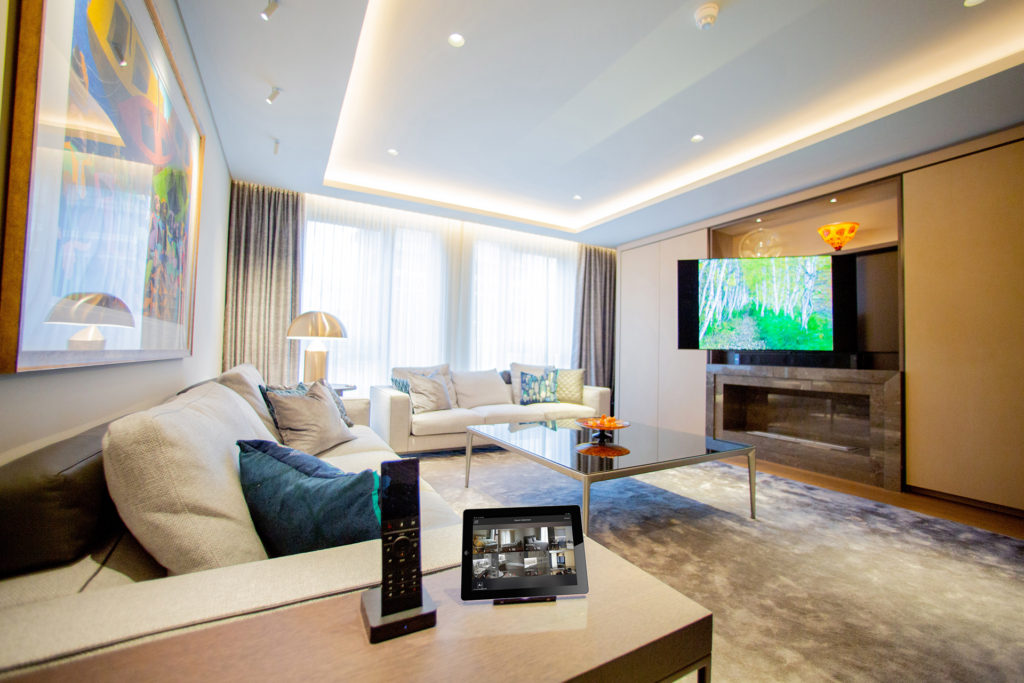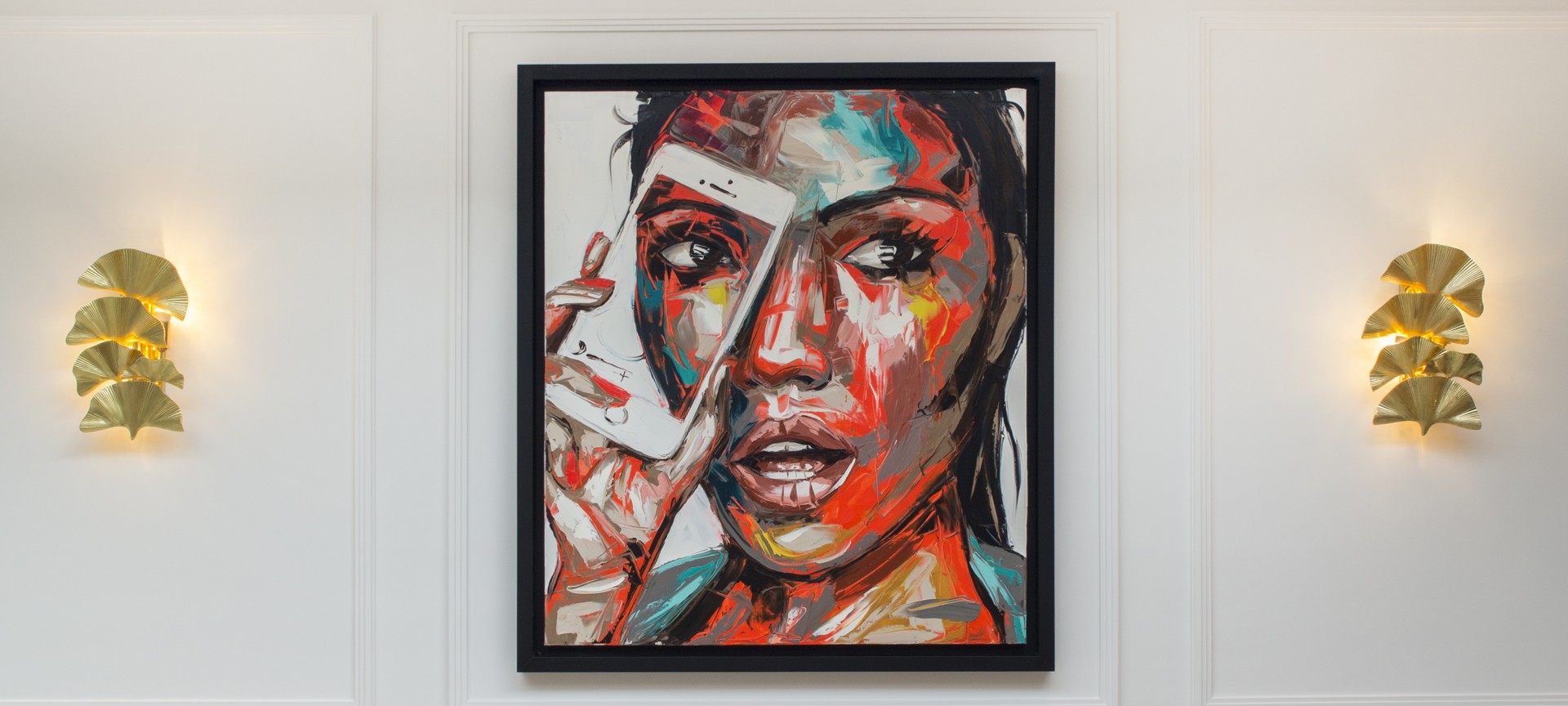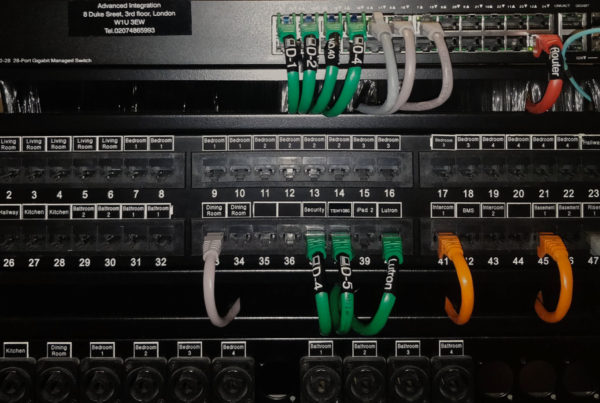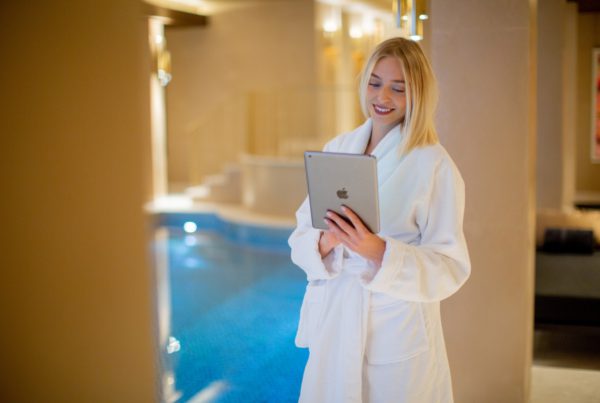In our projects, we often have to deal with paintings, sculptures and other works of art. Indeed, home automation can significantly help to better display and preserve artworks. Let’s see how.
Let it shine
When a room has paintings on the walls, owners quite literally want them to be in the best light. However, it is important to think the lighting design through from both an aesthetical and functional point of view.
For instance, the angle and temperature of the lighting can change the way in which a panting appears dramatically. As Lutron exemplifies, it is possible to simulate natural light and program it to change during the day for an enhanced experience, or even to reflect the setting of the painting itself.

Comparison of two light settings on the same painting (©Lutron)
The brightness level of the artwork, in relation to the rest of the room, it’s also crucial to ensure it gets its deserved attention. However, direct sunlight or aggressive lighting choices can lead to colour fading, and heat build-up can cause several damages.
Sometimes the art is not even there yet, but clients have the intention to buy or are in the process of acquiring a new piece for a certain room, so we need to keep it into consideration e.g. when programming scenes there.
Especially in the case of high-end projects, where expensive art is involved, you wouldn’t leave it to chance, right? That’s why we started collaborating with professionals in the arts field, to make sure our clients can always receive the best advice.
It’s all in the air
If lighting has the most visible impact in terms of aesthetic, climate control takes the lion’s share when it comes to keeping your art in good shape.
The main aspects to pay attention to are temperature, humidity and air quality.
Artworks are frequently made up of different materials. For example, think about a canvas with an oil painting, framed in a lacquered wood frame with metal corners. Some of these materials are organic, like wood or cotton, some inorganic, like glass or metal. Each one of them reacts in a different way to environmental conditions, for example by expanding or shrinking with heat, developing mould or rust with excessive humidity etc. This creates tensions that ultimately harm the artwork. Air pollutants can also create damages and proper ventilation is needed to avoid creating micro-climates that deviate greatly from the general ambient conditions. Therefore, it’s important to monitor the environment and keep it as stable as possible.

Experts are divided about the values to aim for, but mostly agree with keeping the temperature between 18-23°C and the relative humidity between 45-55%. Most importantly, they recommend keeping the fluctuations between +/- 5°C for temperature and +/-5% for relative humidity. It’s also worth noting that temperature and humidity are closely related: if the temperature raises and no water is added, humidity will drop. This often happens when heating is on and it’s the reason why for example museums and art galleries often deploy steam humification.
Another thing to keep in mind is to avoid placing your art in close proximity to heat sources: despite it being quite a popular location, the space above the fireplace is exposed to smoke, heat and ashes. These will create stains and cause the paint to turn yellowish, requiring professional restoration.
 What can be done?
What can be done?
Depending on the type and value of the artwork, various measures can be taken.
Here are some examples:
In order to avoid direct sunlight exposure and minimise heat gain and loss, blinds and curtains can be installed. They can be programmed separately from the others, so that they close automatically during relevant hours.
Besides choosing suitable lights (e.g. avoiding fluorescent lights that speed up colour fading), motion sensors can be installed, so that diffused spotlights only turn on when people approach the painting. Bespoke scenes can be employed to create dramatic lighting effects for special occasions.
Mould typically grows with a relative humidity of 65% and more. This can be avoided by monitoring the area and operating the HVAC system accordingly. Of course, the process can be automated to run in the background and send alert in case of sensible variations, so that maintenance can be performed promptly.
Filters like HEPA and UV ones can also be installed to reduce air pollutants and improve air quality.
Next step
We tried to give a general overview but, depending on its characteristics, your property might need a more personalized setup. Reach out to discuss your project with our technical team!







